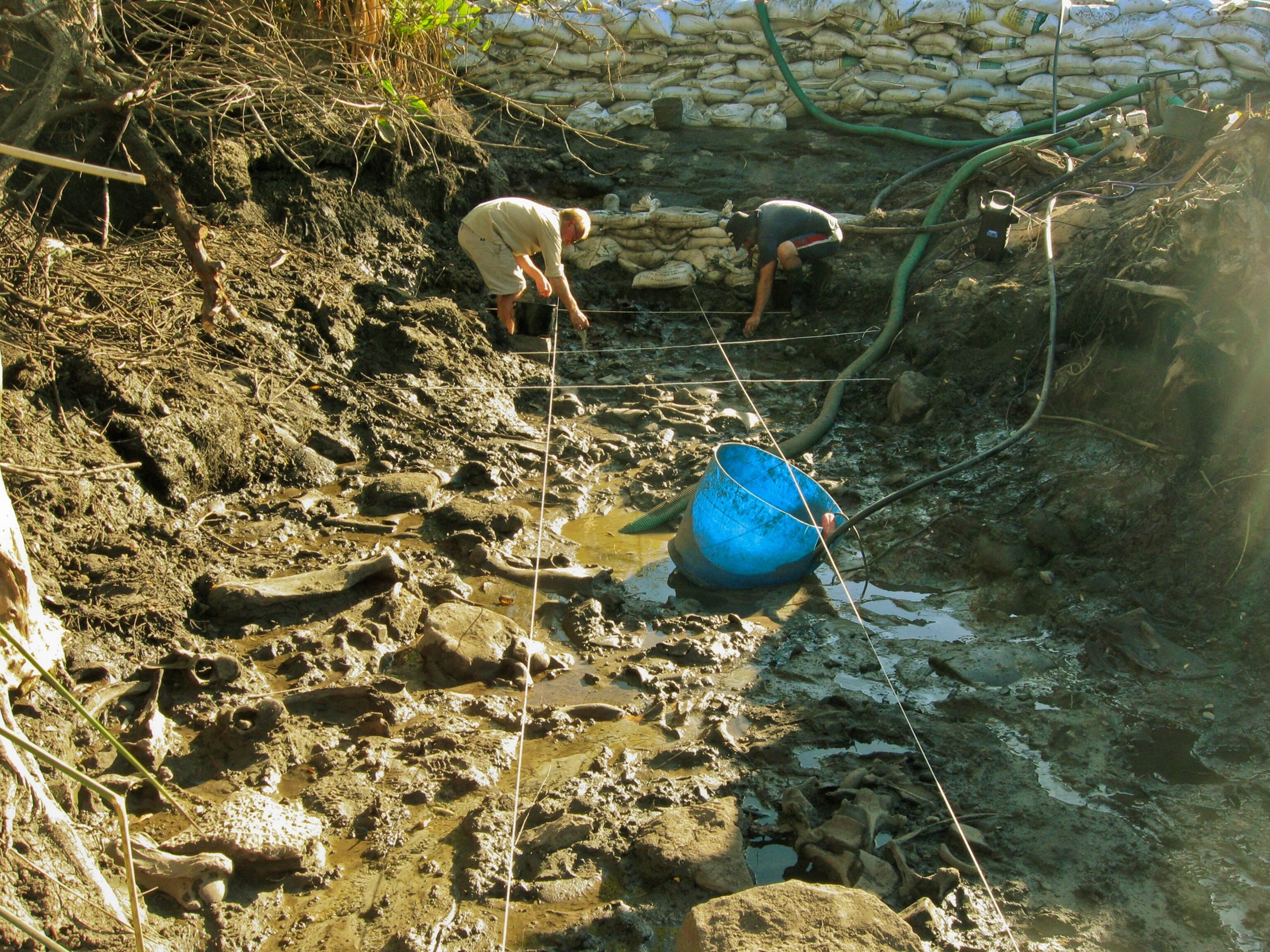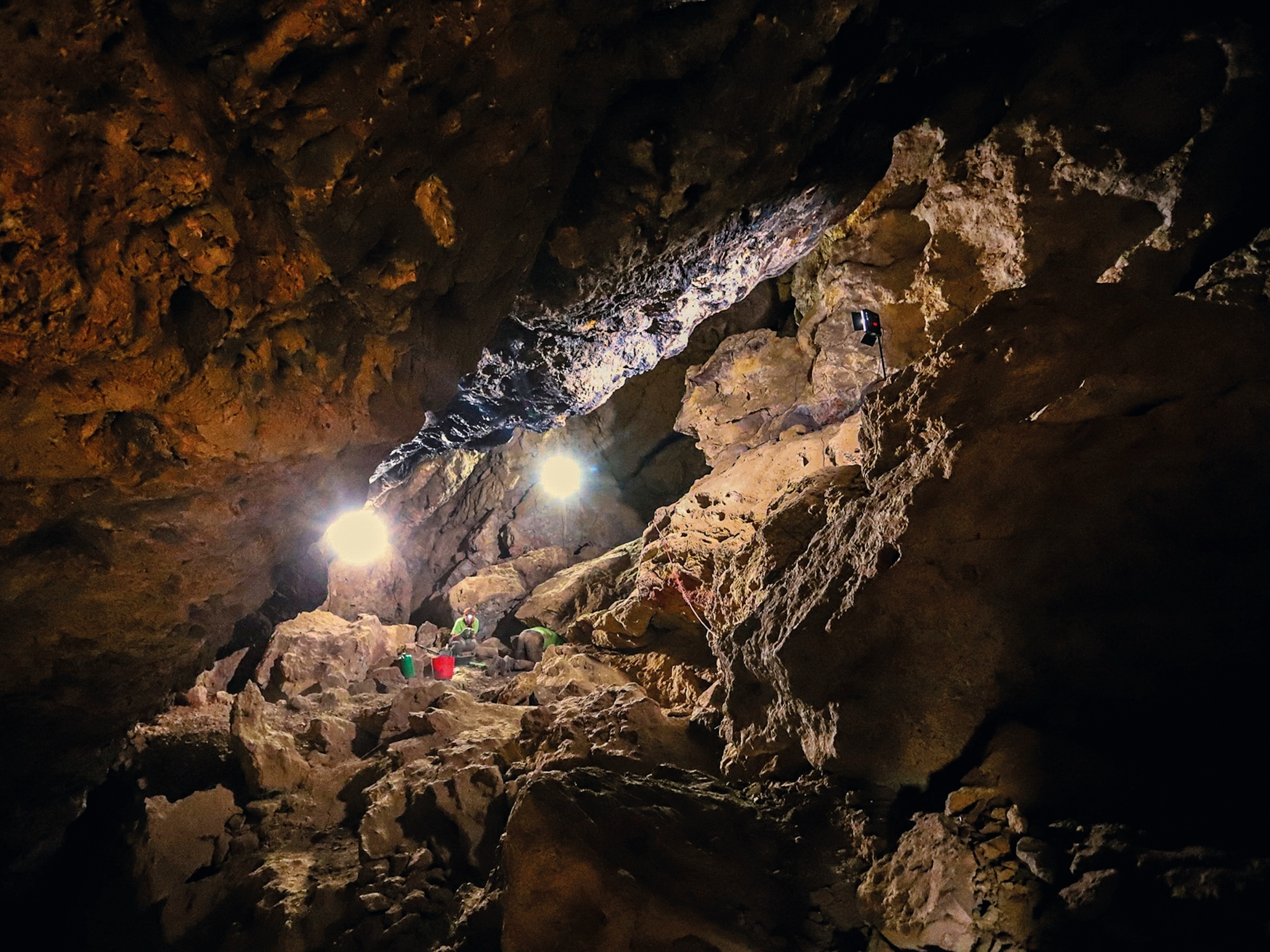
Were People Killing Giant Sloths in South America 30,000 Years Ago?
Bones with marks left by human tools could point to earlier human arrival in the Americas.
When did people get to the Americas? The answer remains a subject of fiery debate.
Most scientists agree that humans began arriving in the Americas between 13,000 and 15,000 years ago, and the Clovis people of North and Central America are generally considered the "first Americans."
But new fossil evidence from a streambed in southern Uruguay could challenge such theories.
Results published November 19 in Proceedings of the Royal Society B suggest the presence at the site of human hunters who may have killed giant sloths and other megafauna. That itself isn't odd, but the site, called Arroyo del Vizcaíno, has been radiocarbon dated to between 29,000 and 30,000 years old—thousands of years before people were thought to be there. (Also see "Photos: Speared Mastodon Bone Hints at Earlier Americans.")
"That's pretty old for a site that has evidence of human presence, particularly in South America," said study co-author Richard Fariña, a paleontologist at Uruguay's Universidad de la República.
"So, it's strange and unexpected."
What's the controversy?
Giant sloths, saber-toothed cats, oversize armadillos, and other large mammals once roamed the Americas—a diversity that would easily rival an African savannah today. (Watch a saber-toothed cat video.)
But by 11,000 years ago, many of the species had disappeared, likely due to climate change or the arrival of human hunters in the New World. But when exactly humans got here, and how they arrived, remains unknown.
What's new?
In 1997, severe drought forced local farmers to drain a lagoon in Arroyo del Vizcaíno, which exposed a mysterious bed of gigantic bones.
After a series of bureaucratic roadblocks, paleontologists excavated the site in 2011 and 2012, unearthing over a thousand fossils. "From the paleontological point of view, that is absolutely marvelous in itself," Fariña said.
Many of the bones belong to three extinct ground sloth species, mainly Lestodon armatus. Weighing in at up to four tons, the animals "were the size of smallish elephants," he said.

Fossils from other common South American megafauna turned up in the mud as well: three species of glyptodonts, or armadillo ancestors; a hippo-like animal called a toxodon, which has no living relatives; a South American saber-toothed cat (Smilodon populator); and an elephant-like stegomastodon, among others. (Learn more about extinct animals that could possibly be revived.)
Some of the bones bear telltale markings of human tools, which suggests the animals were hunted for food. The team also found a potentially human-made scraper that could have been used on dry animal hides, and stone flakes.
Why is it important?
Clues from the site point to a human presence at Arroyo del Vizcaíno much earlier than accepted theories of migration. Fariña and his team are both excited and cautious about their results.
Fariña said the strength of the new evidence lies in the team's methodology and the fact that two of the bones they tested for dating also bore markings similar to those made by human tools. "The association can't be closer than it is," he said.
The date of Arroyo del Vizcaíno may make some archaeologists cringe: South America's earliest human settlement at Monte Verde in Chile dates to only 14,000 years ago. (Also see "Clovis People Not First Americans, Study Shows.")
What does this mean?
The study certainly does not prove definitively that humans were killing giant sloths 30,000 years ago in South America.
The fossils found at Arroyo del Vizcaíno might simply be a product of nature mimicking human tools, and the authors acknowledge that possibility.
"South America played an exceptionally important role in the peopling of the Americas, and I'm pretty sure we have some significant surprises waiting for us," Bonnie Pitblado, an archaeologist at the University of Oklahoma who was not associated with the study, said in an email. (Read a National Geographic magazine story on the peopling of the Americas.)
"Maybe people killing sloths at [the Arroyo del Vizcaíno site] 30,000 years ago is one of them, maybe it's not—but it certainly isn't going to hurt to have it on our collective radar screen as we continue to contemplate the peopling of the New World."
What's next?
The Uruguayan team has further excavations and environmental reconstruction studies planned for the site.
Fariña estimates that it could yield a thousand more bones, and they plan to build a local museum to house the site's many fossils.




